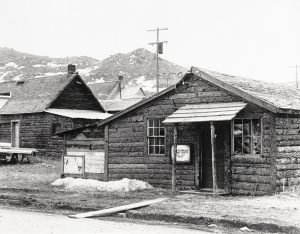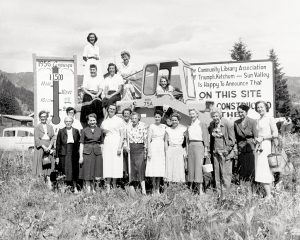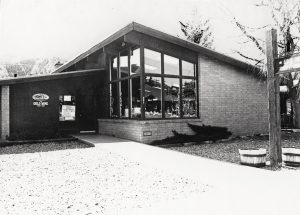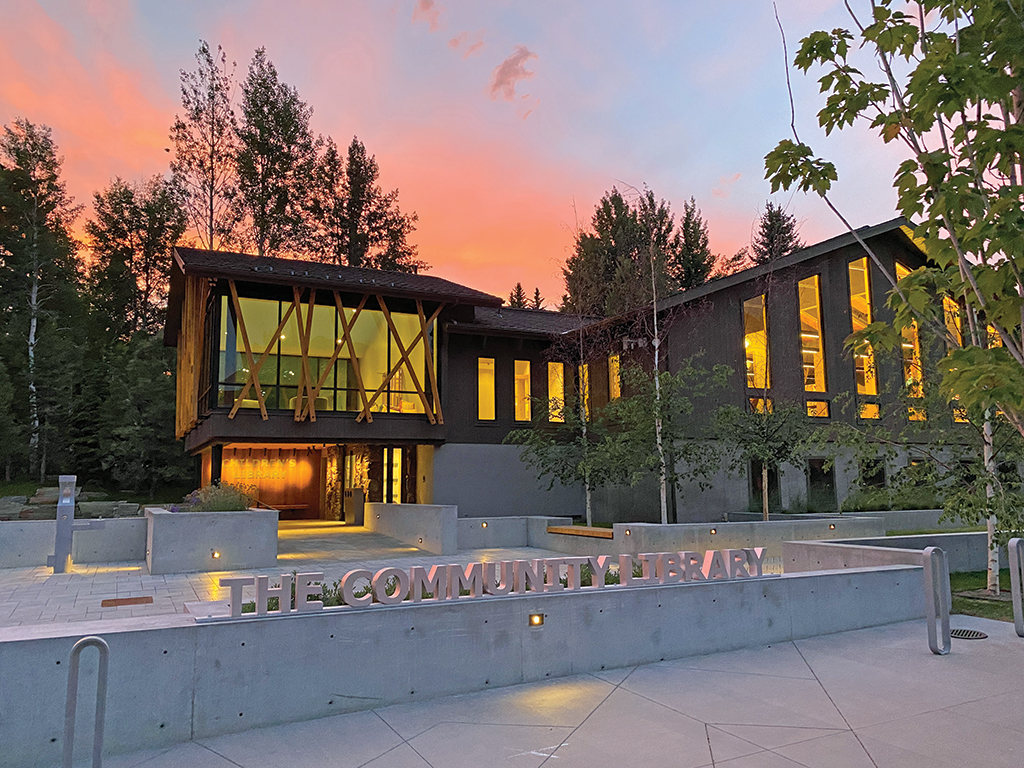The Sun Valley Community Library was founded on the independent spirit so intrinsic and interwoven into life out West. In 1955, seventeen women established the Community Library Association with a single dollar donation from each member and an intention to create a privately funded, privately governed, nonprofit cultural organization. It all began in a one-bedroom cabin that housed the Gold Mine Thrift Store, the chief fundraising arm for the library at the time.
More than sixty years later, the Community Library occupies 27,635 square feet covering an entire city block and houses nine program areas that serve the Wood River Valley and beyond. Its founding mission of building a strong community through bringing information, ideas, and people together remains at its core.
“The founding women saw that this community would be stronger having a cultural center around books,” said executive director Jenny Emery-Davidson.
Unlike most library across the country, the Community Library does not receive any local, state, or federal tax funding, Emery-Davidson explained. “From its inception, it has been independent,” she said. “It truly is different from all other libraries in the country and is funded solely through the revenue of that thrift store—built decades ago and through private donations.”
This independence extends beyond how the library is funded to its operations. Many libraries limit library card access to local and in-state residents and might offer a visitor pass or paid access to out-of-area visitors. The Community Library services, however, expand outside the Wood River Valley, allowing any and all people to get a free library card.

The original log cabin (1955)
“There is this maverick spirit behind Community Library,” said Emery-Davidson. “It’s really of the people; we serve a broad geography.”
Its user base covers 140,000 people, representing 15,000 library card holders from more than 1,500 zip codes across the country. The offerings in the physical and virtual spaces are as diverse as the user base.
The Community Library has more than 80,000 physical books that can be checked out, as well as audiobooks, music, online classes, and more.
“We are so proud of the collection of books and that’s so primary to what people enjoy at the library, but in addition we have such a wide programming of educational offerings,” Emery-Davidson said. “The Center for Regional History is such a treasure trove of artifacts and oral histories, that is used by professional researchers and students.”
The library has seen an influx in people utilizing the Center for Regional History, as well.
“I feel anew how significant [the center] is in helping the community navigate change, while maintaining a sense of its history and character,” she said. “Holding onto the stories of the past while new stories are made creates a more resilient community.”

The seventeen visionary women who founded the privately funded, privately governed, nonprofit cultural organization memorializing the site for the first library (1956-57)
As with many things during the ongoing COVID-19 pandemic, the on-site programming required a pivot or two, with much of the offerings moving virtual.
“As much as we miss getting together in a room, it’s been exhilarating to see how we can have these global conversations in Idaho,” said Emery-Davidson. “We have been really excited about how people have continued to participate.”
For Emery-Davidson and the team at Community Library, navigating COVID-19 was a challenge, no doubt, but one they were prepared for thanks, in part, to a newfound flexibility during the newly completed multi-year renovations. “The community learned to be flexible when all of this was going on [the renovations],” she said. “It was a disruptive situation, and we learned to embrace it. It served us well as we navigated the pandemic and taught us to be flexible and gritty.”
The renovations prepared the Community Library in other unexpected ways that have helped navigate the new normal at the space, including a self-checkout system that allowed the library to open this past summer safely and more quickly than many others.

The first new library, which was housed at the site of the current Gold Mine Thrift Store, from 1957-1975
The library also expanded the Bloom Bookmobile this past summer and fall, in partnership with the Hunger Coalition and in an effort to address the gap in school programming and provide children with a free meal and books. “We gave away books called the Seedling Program to grow children’s home [libraries] when their access to books is limited,” Emery-Davidson said. “We gave away 2,500 books, sprouting little gardens of knowledge.”
While there is so much that is uncertain in these current times, Emery-Davidson knows one thing remains ever-present: The importance of access to a library.
“Coming to the library is a way to locate oneself in community,” she said. “Walking in the door, you are part of this shared space with your neighbors. A library is how you build community.”


